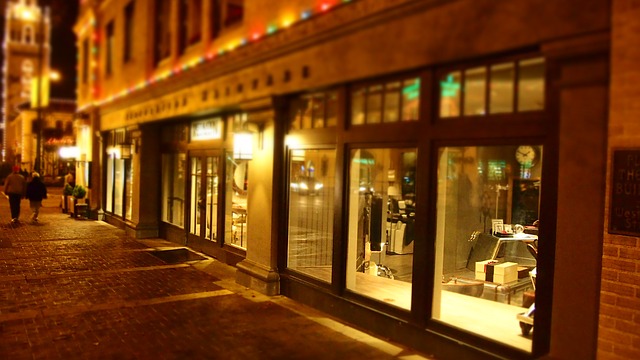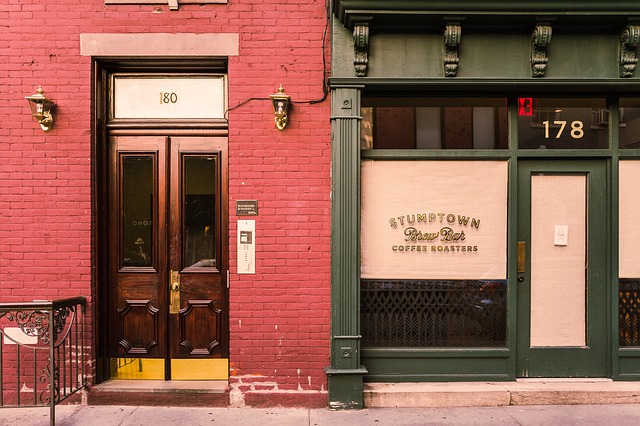Business Owners Can Thrive in the New Retail Ecosystem

Despite what you might be hearing in the news, in today’s strong economy, retail trade continues to grow. April 2019 saw a year-over-year 3.1 percent increase in US retail sales. Despite the convenience of ecommerce, in-store shopping remains dominant. Sixty-four percent of Americans today are shopping in-store vs. 36 percent shopping online. Shopping in stores accounted for 85.7 percent of retail sales in 2018. Most consumers still enjoy and value the physical shopping experience, where they can see, hold, touch, and try on merchandise before buying.
Ecommerce famously has had a negative impact on stores and shopping malls, and many observers hold ecommerce chiefly responsible for the numerous store closures and downsizing of the past few years. The challenges ecommerce presents to real estate are complicated. However, we discern potential areas for growth in the retail CRE sector, especially for owner-users. Commercial real estate pundits who predict doom, gloom, and the eventual loss of retail assets’ value may be blinding themselves to today’s opportunities.

Mixed-use properties
Mixed-use properties are particularly well suited to these changing times. Retail owners have by now pruned their dead or dying properties and changed their focus to higher-growth retail and mixed-use projects (retaildive.com). The owner/user model, where the owner’s business occupies at least 51 percent of the net rentable square footage of a property, is eligible for advantageous SBA 504 loans. The commercial and residential combination is common for SBA-accepted properties, e.g., a retail business below and rental apartments above.
An SBA 504 loan we recently arranged for the acquisition of a mixed-use, three-story retail/residential building in Brooklyn, New York, is a good example. The buyer, Brooklyn Brokerage, is an independent Insurance agency that will occupy the ground-floor commercial unit and a second-floor apartment unit for the business, and lease a third-floor apartment unit for additional income from the property. this type of small storefront building with apartments above and retail below is a common sight in New York City. The commercial ground floor usually occupies less square footage than the residential portion above. Urban infill markets with walkable retail such as the property described above, offer generally stable opportunities, especially when they are well well-maintained, and storefronts are visible from the street.

“Total Commerce”
As retail evolves at a rapid pace, shopping today is an anytime, anywhere, 24/7 activity. The boundaries between brick-and-mortar stores and e-commerce are blurring for general merchandisers. No longer this-or-that, either/or, it is one, total commerce ecosystem, and smart retailers will keep up with the trend. “The message needs to be: This is how consumers are choosing to shop. We need to be there in whatever way they want us to be,” according to cnbc.com.
Many online retailers are now finding it profitable to open brick-and-mortar outposts that complement and facilitate their online sales and deliveries. As these sellers scale up, the move from “click to brick” is necessary for continued growth. Digital native brands will open approximately 850 physical stores over the next five years, according to a report by JLL on more than 100 top online retailers. Amazon’s acquisition of Whole Foods is part of this trend, as well as its physical retail sites Amazon Books, Amazon Go, AmazonFresh Pickup, Amazon Pop-Up stores, and Amazon Hubs for package pick-ups and drop-offs, with plans to open hundreds more. A recent study by ICSC indicated that when native online retailers open brick-and-mortar stores, they experience a 45 percent increase in online traffic in that market area.
Further timely investment opportunities are emerging from the repurposing of abandoned big box stores and retail malls to create spaces for ecommerce warehousing and fulfillment operations.

Service Retail
Retailers know that one key to differentiating their businesses and attracting new and loyal customers is to deliver superior customer service, beginning with the first-time potential buyers walk in to their stores. The key is to develop a relationship with the buyer that will translate into repeat business and word-of-mouth referrals. Service retail will never go out of style, but it is evolving in line with today’s market conditions. According to retaildive.com, store closures have peaked by now, and physical retailers are going all out to compete by reinvesting in their stores.
The retail-as-a-service concept has expanded to experience-driven retail that creates an attractive, even entertaining atmosphere that fosters a sense of social community. Retail Prophet CEO Doug Stephens has define the concept as “hosting brands in a space that is curating that space in a very particular way, employing great design, creating great online content,” as well as great staffing, merchandising and analytics. For example, the online furniture retailer Wayfair is opening a store with showrooms and displays that will include interior designers to help customers make choices (Bloomberg.com). Other owner-users are converting industrial-type properties, such as abandoned big box stores, into mixed-use office and ecommerce fulfillment centers.

Retail innovations
Retailers are experimenting with technology, location size and various customer services. In line with the function of stores meeting consumers’ desire to see, hold and touch a product before buying, the retail chain b8ta’s 15 stores, plus one in Macy’s in New York City, serve as presentation centers for consumer electronics and other innovative products. Some chain retailers are downsizing their stores, including Ikea and Nike. The Nike Live concept has localized products and an intimate feel, with an emphasis on mobile technology and tie-ins for NikePlus members.
Another great example: Nordstrom was losing traffic in its department stores due to the popularity of its online sales. It is expanding its service-hub Nordstrom Local concept that combines several of its most popular or highly demanded services under one roof to serve customers in their own local markets. The boutique stores have no inventory; customers can pick up online orders. “Local” isn’t a mini-Nordstrom store; according to forbes.com, it’s “a wholly new offering seeking to meet customers where they [a]re in a remarkable, intensely customer relevant way.”
Financing
Another great example: Nordstrom was losing traffic in its department stores due to the popularity of its online sales. It is expanding its service-hub Nordstrom Local concept that combines several of its most popular or highly demanded services under one roof to serve customers in their own local markets. The boutique stores have no inventory; customers can pick up online orders. “Local” isn’t a mini-Nordstrom store; according to forbes.com, it’s “a wholly new offering seeking to meet customers where they [a]re in a remarkable, intensely customer relevant way.”
Brick-and-mortar retail properties continue to evolve in many ways, and, we believe, will offer more and more options for investors. When it comes to financing mixed-use properties with retail components, the SBA 504 program has advantages that no other can equal, including 90 percent LTV (loan-to-value ratio) financing, a low fixed rate, and up to 25-year terms. We specialize in helping borrowers though the SBA 504 loan process to ensure success. When you work with an experienced SBA lender like Liberty SBF, you can be confident that we will anticipate any problems and help you overcome any potential obstacles.
Interest rates are low, and now is the time to lock in your fixed-rate SBA 504 loan. Contact Liberty SBF, and we can get the job done in 45 days or less.
Email info@i.libertysbf.com or call (213) 297-5747.
You can also connect with Liberty SBF on LinkedIn
RECOMMENDED ARTICLES
Hotel Financing With the SBA 504 Loan Program
Non-Bank Lending Is the Solution for Small Business CRE Loans